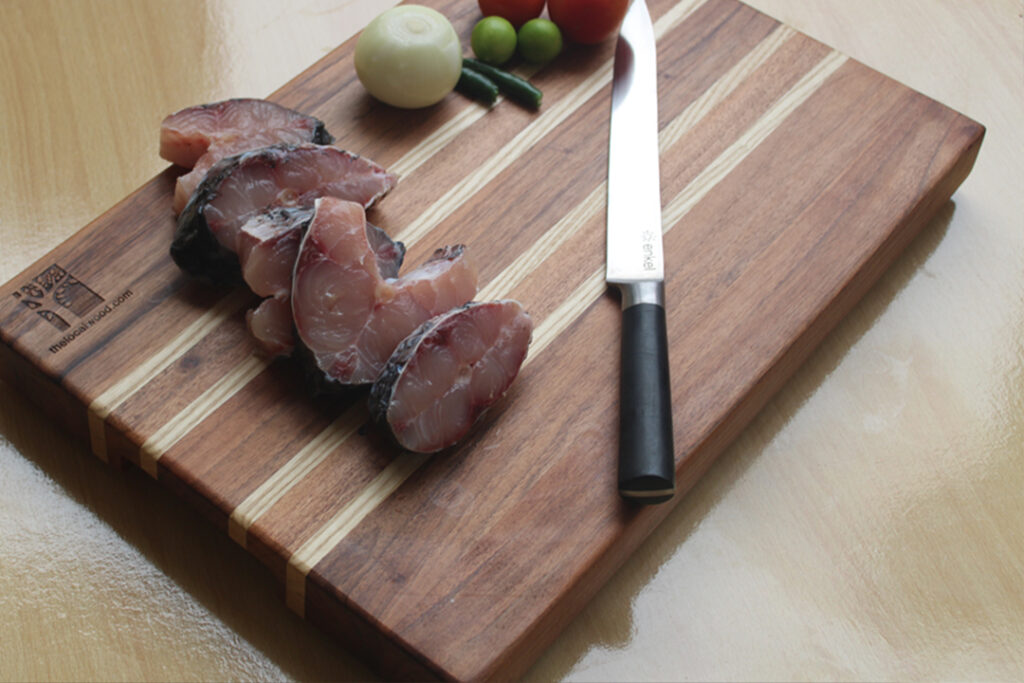
Is Walnut Good for Cutting Boards?
When it comes to outfitting your kitchen with essential tools, a cutting board is a non-negotiable piece of equipment. Beyond being a platform to prep ingredients, cutting boards are a line of defense against dull knives, food contamination, and even cross-contamination for those cooking with allergens. Understanding the right material for your lifestyle and cooking habits is vital. But among the plethora of choices, is walnut a contender for the top slot? Let’s delve into the merits of walnut as a cutting board material and explore whether it’s an ideal choice for your kitchen.
Introduction: The Significance of Cutting Board Material
The material of your cutting board can affect more than just the aesthetic appeal of your kitchen space. It not only plays a role in preserving the sharpness of your knives, but can also impact your food preparation by resisting bacterial growth and ensuring a safe cooking environment. Selecting a suitable cutting board involves several considerations, and for many, the material’s durability, cost, and maintenance routine are key factors. Before you invest in a walnut cutting board, it’s essential to understand what makes it stand out.
Benefits of Walnut for Cutting Boards
Durability and Longevity
Walnut is prized for its strength and durability, making it an ideal choice for a hardworking surface like a cutting board. It can withstand heavy use without warping or splintering, which is particularly important in the context of frequent and vigorous chopping that can soften lesser materials over time.
Natural Resistance to Bacteria and Mold
Walnut’s dense grain structure naturally repels moisture, which is beneficial in the kitchen where damp conditions are common. This resistance to moisture makes it challenging for bacteria and mold to take hold, reducing the risk of foodborne illnesses and enhancing the board’s safety.
Gentle on Knife Blades
A cutting board should be kind to your knives by not prematurely dulling them. Walnut’s pliable yet strong nature provides just enough give to protect the blade edge, preserving sharpness and prolonging the lifespan of your kitchen knives.
Attractive and Aesthetic Appeal
The rich, dark color of walnut offers a timeless, elegant look that can enhance the visual appeal of your kitchen. Many home cooks and chefs appreciate the warm, inviting aesthetic that walnut brings to their cooking space.
Considerations for Using Walnut Cutting Boards
Regular Maintenance and Oiling
While walnut cutting boards are robust, they do require some maintenance to keep them in top condition. Regular oiling can prevent the wood from drying out and also rejuvenate the board’s luster. This task, though necessary, can also become a meditative and rewarding practice that strengthens your bond with your kitchenware.
Cost and Availability
Walnut cutting boards are generally more expensive than their counterparts due to the quality of the wood and the crafting process. Availability may be limited, but the investment in a walnut cutting board can be seen as a purchase that lasts a lifetime, adding value in the long run.
Allergies and Sensitivities
It is important to note that walnut is a common allergen. For individuals with nut allergies, using a walnut cutting board may not be safe or comfortable. Always consider the preferences and health restrictions of those who share your kitchen space.
Comparison with Other Cutting Board Materials
Bamboo
Bamboo cutting boards are lauded for their sustainability and affordability. However, they are not as hard as walnut and can show knife marks more readily. Bamboo also requires regular oiling to maintain its integrity.
Plastic
Plastic cutting boards are inexpensive and dishwasher safe, but they can harbor more bacteria than wood and tend to score easily, creating a breeding ground for microbes.
Maple
Maple cutting boards are a favorite among many home cooks and professional chefs. They are of similar hardness to walnut and provide many of the same benefits, including resistance to moisture and gentleness on knife blades.
Tips for Choosing and Caring for Walnut Cutting Boards
Selecting the Right Size and Thickness
Consider the available space in your kitchen and the typical volume of food you prepare. A larger, thicker walnut cutting board may be more versatile for extensive meal prepping, while a smaller, thinner one could suffice for quick, everyday slicing tasks.
Proper Cleaning and Sanitization
After each use, wash your walnut cutting board with warm, soapy water and dry it immediately with a clean towel. For a deeper clean, you can sprinkle the board with salt or baking soda and scrub it using half a lemon, which acts as a natural abrasive and deodorizer.
Oiling and Maintenance Routine
How often you should oil your walnut cutting board depends on how frequently it’s used. A general rule of thumb is to oil it every few weeks or when it begins to look and feel dry. Use food-safe mineral oil or a specialized cutting board oil to keep your board in prime condition.
Conclusion: Making an Informed Choice
Walnut cutting boards are indeed a worthy option for those who appreciate durability and elegance in their kitchen tools. By understanding the unique properties of walnut and how to maintain it, you can ensure that a walnut cutting board becomes a cherished part of your culinary routine. However, the decision ultimately comes down to your personal preferences, budget, and the practicalities of how you use your cutting board. As you continue to explore the world of kitchenware, take conscious steps to choose pieces that resonate with your cooking style and values. Whether walnut, maple, bamboo, or another material, your cutting board should reflect the care and thought you put into every dish you prepare in your kitchen.
For those committed to the art of cooking, the cutting board is not just a functional necessity but an extension of their craft. It is a stage upon which the alchemy of food happens, a sacred space where ingredients transform. As you equip your kitchen with tools that support and enhance this process, a well-chosen walnut cutting board may just be the addition that elevates your culinary experience.
